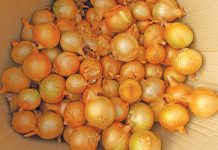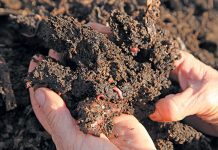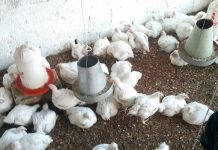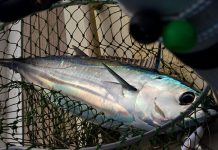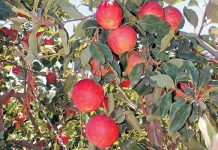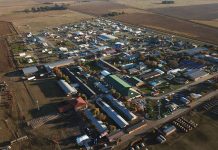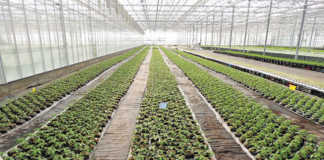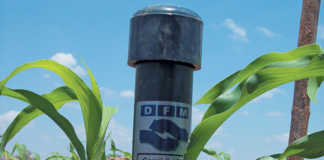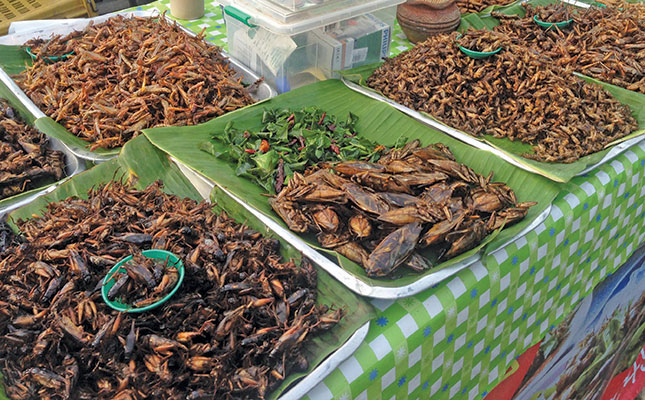
Photo: Lindi Botha
How do you see the agricultural landscape changing over the next few years?
It certainly won’t be business as usual. Water scarcity will drive production and efficiencies. We need to farm up, not out; in other words, increase yield per hectare rather than expand lands and orchards. This is where biotechnology will come in; we’ll see better genetics that produce more.
Genetic engineering will be an irrefutable part of agriculture, but in a more positive way. Instead of manipulating plant genes to be chemical-tolerant, researchers will develop genetic improvements in nutritional elements and shelf life. Best practices will be applied to prevent chemical use rather than have plants that allow the widespread use of chemicals.
So herbicide cost is reduced and productivity improved.
Around the world, people are changing what they eat. I believe this is because we have a deeply intuitive sense that we need to eat better. Notwithstanding the hype of plant-based protein, these notions are real.
They’re driven by our sense of sustainability, because we can’t keep producing animal protein the way we are. We can’t grow enough soya bean and maize to feed our animals and people, and the quantity of antibiotics and steroids used in meat production is unhealthy and unsustainable.
We have to start looking at different ways to produce protein, and this includes sources other than animals. It doesn’t mean you have to be a radical vegan.
There’s more balance coming in; people are reducing the amount of meat they eat because there’s an understanding that the way in which most animals in large commercial farming operations are reared is inhumane.
When you tell consumers that the price of meat will rise by 30% if animals are raised more humanely, they say they’re willing to pay that.
Currently, this might be only a small part of the population, but it’s a start. What begins as a trend will grow into common practice. People start hearing about the Amazon forests being burnt for beef production and it starts a wave of consciousness about what we eat.
What are the crops that will undergo the most changes to suit new consumption patterns?
Sugar is a sunset industry, and we’re faced with the conundrum of converting those farms to something else. They can’t go out of production, as livelihoods and economies depend on them.
Field peas have suddenly presented an exciting prospect and would be ideal to grow in areas where sugar cane was planted previously. Field pea genetics have been improved
to produce 28% protein, and starch fibre, cellulose and a Sourcespea syrup can be produced from the same crop after extracting the protein.
There never was an incentive to dive into these genetics and improve them, because the only consumers were so-called hippie vegans. But now there’s a greater demand for alternatives, hence the innovation.
The more we look at the broader perspective, the more we explore the options. Demand for macadamia milk, for example, is growing rapidly, so uses for the nut have increased.
With the rise in production, other companies become interested in macadamia waste products and another industry springs up, all adding to the sustainability of the crop.
Nuts are a far more efficient source of protein than legumes. Improved technology and genetics mean that we can grow macadamias and avocados in the Western Cape, where they’ve never been grown before. So we see dairy farms going out of the supply chain and nuts coming in, providing alternative sources of farming income.
Where does that leave beef, considering that much of the Earth has grasslands suitable only for grazing?
Plant-based protein is about alternatives, not replacement. The worst mistake would be to try to convert all livestock farmers to crop farmers, because it’s unsustainable. Rather innovate and give people a choice; don’t create a radical conversion.
We certainly won’t stop meat production; it has its place. But we’ll think about it differently. So instead of trying to fatten up big Charolais cattle in the Free State, we could see more game production there, as these animals are better suited to natural veld.
With lab-grown meat, stem cells from cattle are multiplied using plant-based proteins such as field peas. This process is far more efficient than beef production: approximately 93% versus 12%. With lab-grown meat, there’s no waste, and the cost of production is far lower. I don’t think it’s necessarily the ultimate solution, but the technology that is being developed will become a stepping stone towards creating more innovation.
Certain vitamins and minerals we can only get from meat, so it will always be part of our diets. But we’re using a huge footprint to produce meat in quite inefficient ways and we need to find alternative ways to lessen the environmental toll on the planet.
Where do edible insects fit into the alternative protein picture?
There have been significant investments in this industry, but it is the least attractive one in the alternative protein landscape, as insects are the least presentable.
While poorer people and many in Asia already include insects in their diets, making insects available on a large scale to solve protein deficiencies in low-income households is not necessarily as attractive to investors as producing plant-based proteins for higher-income groups.
Insects are the most efficient converters of food to protein, and I foresee that in the future 30% of our protein will come from insects, 40% from plants and the rest from animals.
Larvae will be produced on an industrial scale for protein extraction. The insect-farming industry is still very small, but it will certainly grow.
How big is the market for plant-based protein?
It’s huge. The more this type of protein becomes available, the more the cost comes down and the greater the uptake.
The global meat market is worth US$1,75 trillion [about R25,6 trillion] per year. The plant-based protein market is at US$200 billion [R2,9 trillion]. It’s small in comparison, but still large.
Our biggest challenge in growing innovation in the farming sector will be skilled labour, and it will hit us hard in South Africa. I encourage young people to study agriculture, and that doesn’t mean they’ll spend their lives ploughing fields; they could be drone operators, or work in marketing or technology.
These are the skills we need to take this industry forward.
I’d encourage every farmer to go to one of the big food expos in the world at least every three years to see where the future lies. Farmers need to stay ahead and be informed about what’s happening.
If you look at innovations in the food industry, there are fortunes to be made for those who are informed and willing to adapt.
Email Mark Hassenkamp at [email protected]


